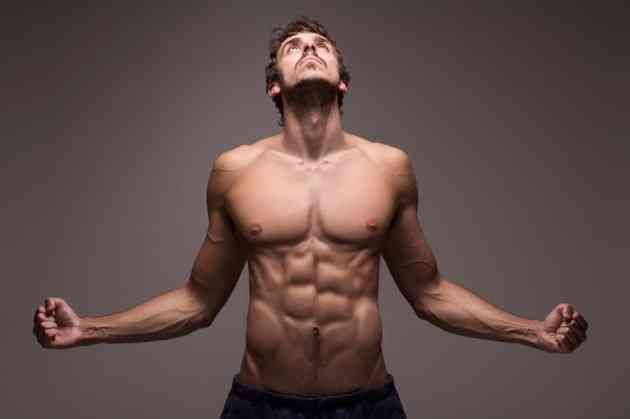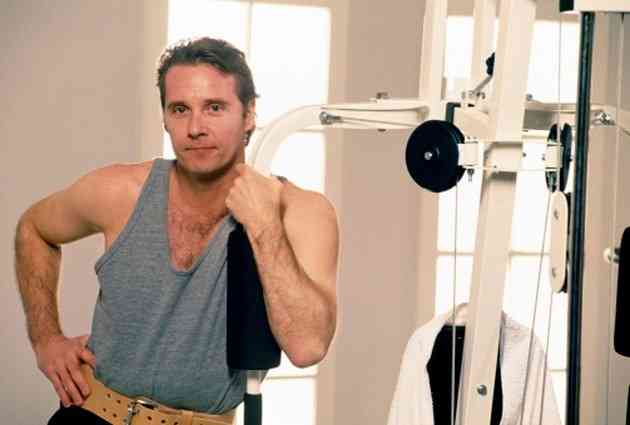The Best Workout for Cutting Up Your Chest

Sculpting your chest muscles in the gym requires a combination of hard work, proper exercise selection and intelligent dieting. Etching out more definition in your chest muscles requires hard work -- it won't be easy. The exercises you choose must target your chest from all angles, and you'll need to restrict your diet to help you burn through fat that lies on top of your chest, hiding your muscles.
 Cutting up your chest requires multiple chest exercises that work different angles. (Image: Filip_Krstic/iStock/Getty Images)
Cutting up your chest requires multiple chest exercises that work different angles. (Image: Filip_Krstic/iStock/Getty Images)The Best Chest Exercises
The best workout for your chest muscles has to take into consideration how your chest muscles work. The pectoralis major, the major chest muscle, has a few purposes. It brings your arms together horizontally, like a bird flapping its wings. The pecs also raise your arms straight in front of you, pull your arms back to your sides and rotate your arms in the same motion you use when you give a "thumbs-down." explains an article from the University of Washington's Department of Radiology.
Horizontal Press
There is one particular motion that seems to work the pectoralis major more than any other, and that is the horizontal press. An example of the horizontal press is a push-up or bench press, where you are pushing something away from you. This motion is different from a vertical press, which is when you push weight straight up towards the sky. That type of press uses more of your shoulder and triceps.
The Fly
While a horizontal pressing motion works the chest muscles a lot, it also uses muscles like the anterior deltoid (the shoulder muscle) and triceps to help you move the weight. If you want to do an isolation exercise for the chest that cuts out those muscles you can do something like a dumbbell fly, which is the same motion that a bird uses to flap its wings.
The Pullover
A dumbbell fly or horizontal pressing motion works most angles of the chest muscle, but the last angle is the most tricky. The pectoralis major also pulls your arms down towards your body, which is a movement that is rarely included in a chest workout. The best exercise for that motion is a dumbbell pullover.
The Workout
The following chest workout includes exercises from all three different types of movements -- a standard press, a fly and a pullover -- to hit all areas of your chest. After completing a warm-up, perform three sets of eight to 12 repetitions, using as much weight as possible with proper form for all of the exercises.
Bench Press
This exercise recruits the pecs more than any other exercise, according to research conducted by the American Council on Exercise in 2012. The bench press also allows you to use a lot of resistance, which helps develop your chest muscles. You should have a partner spot you during this exercise to make sure that you can lift the weight.
Step 1
Lie down on a bench. Line up with the barbell directly over your eyes. Your feet should be flat on the ground.
Step 2
Grab the barbell slightly wider than shoulder-width apart.
Step 3
Unrack the bar and hold it directly over your shoulders with your elbows straight.
Step 4
Lower the bar and touch the bottom part of your chest muscles.
 The bench pres. (Image: doble-d/iStock/Getty Images)
The bench pres. (Image: doble-d/iStock/Getty Images)Step 5
Press the barbell back up to the top position, with your elbows straight and the bar over your shoulders.
Dumbbell Fly
This exercise focuses on the pectoralis major and takes stress off of the arm muscles. You should do it after the bench press because it requires less focus.
Step 1
Lie down on a bench, holding dumbbells above you with your elbows straight. Your knuckles should face out to the sides, with your hands in a neutral grip.
Step 2
Slowly spread your arms apart, with your elbows slightly bent, aiming your knuckles down towards the floor. Lower your arms until your knuckles are in line with your torso.
Step 3
Raise the dumbells back up, bringing your hands back together over your body with your elbows slightly bent.
Dumbbell Pullover
This is a chest muscle that works a different angle of the pecs than the bench press or dumbbell fly. It also activates the triceps and lats (a back muscle) more than the bench press, according to a 2014 study published in the Motriz Journal of Physical Education that compared the bench press to the pullover.
Step 1
Lie down on a bench, holding one dumbbell with both hands. Hold the bell with both hands under the weighted part of the dumbbell, not the handle. Your hands should form a triangle under the weight itself, and the rest of the dumbbell should be hanging down towards your chest.
Step 2
Keeping your elbows slightly bent, reach your arms back over your head until your biceps are close to your ears.
Step 3
Pull the dumbbell back up, keeping your elbows slightly bent, until it is over your chest once again.




